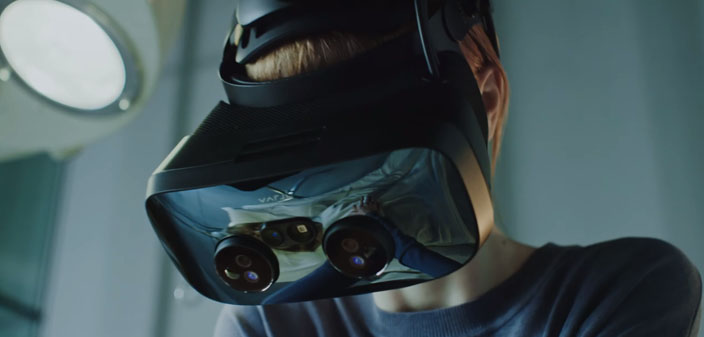Continuing its “Resolution Revolution”, Varjo has announced two new human-eye resolution XR/VR headsets, the XR-3 and VR-3, delivering improved visual fidelity across industries where absolute precision is necessary, including training and simulation, design, engineering, medical, and research.
Featuring a focus area at 70 PPD uOLED, with a 1920 x 1920 resolution per eye, and a peripheral area at over 30 PPD LCD, with a 2880 x 2720 resolution per eye, both the XR-3 and the VR-3 unlock new professional applications and bring us closer to photorealistic virtual and mixed reality experiences. Compared to the previous generation, the VR-2 and the VR-2 Pro, the two new headsets are 40% lighter, and improve on eye strain and simulator sickness by using an ultra-wide optical design. Additionally, both headsets feature automatic IPD, a 115-degree field of view (against the 87-degree FOV from Varjo’s previous headsets), a 90Hz refresh rate, hand tracking capabilities using Ultraleap Gemini, and eye-tracking at up to 200 Hz to optimize visual fidelity through foveated rendering.
To further improve XR-3 tracking, users can choose between SteamVR 2.0/1.0 base stations or inside-out tracking. For inside-out tracking, Varjo uses not only stereo RGB video pass-through feed but also the industry-first lidar for mixed reality, delivering “seamless merging of real and virtual for perfect occlusions and full 3D world reconstruction”. With real-time 3D room reconstructions, users can easily build realistic immersive environments of their surroundings.
“Our team has been working non-stop throughout 2020 to further push the envelope of what is possible in XR and VR. The new XR-3 and VR-3 are the most advanced, zero-compromise devices on the market and suitable for any professional workflow,” said Urho Konttori, co-founder and Chief Innovation Officer of Varjo. “We are especially excited by the introduction of depth awareness in the XR-3 through combined lidar and RGB video. With our highest-performance XR, Varjo is setting the new standard for professional immersive computing and paving the way for a collaborative, cloud-enabled mixed reality workplace.”
With Varjo’s headsets, professionals can do everything from designing and modifying 3D models to training in photorealistic environments and creating limitless research scenarios with pixel-perfect clarity. For example, Lockheed Martin is using Varjo’s headsets and Prepar3D, a flight simulator, to enable the creation of virtual and mixed reality solutions for pilot training. The Boeing Starliner program is also using these headsets, powered by Unreal Engine, to train astronauts for each phase of the entire mission – from pre-launch to docking to landing – entirely in virtual reality. With Varjo, Sellen Construction, a general contractor in the Pacific Northwest, can keep field teams safer, more prepared, and communicate better with each other and to clients about a project.
While the XR-1 and the VR-2 headsets launched with a price of $9,995 and $4,995, respectively, the VR-3 and XR-3 are now available to order for $3,195 and $5,495, respectively. On top of that, there’s an added cost of $795 for the VR-3, or $1,495 for the XR-3, to acquire a Varjo one-year subscription. With a new price point of the headsets, Varjo claims it is accelerating organizations’ ability to bring immersive technology into the workplace, with shipment starting in early 2021.






